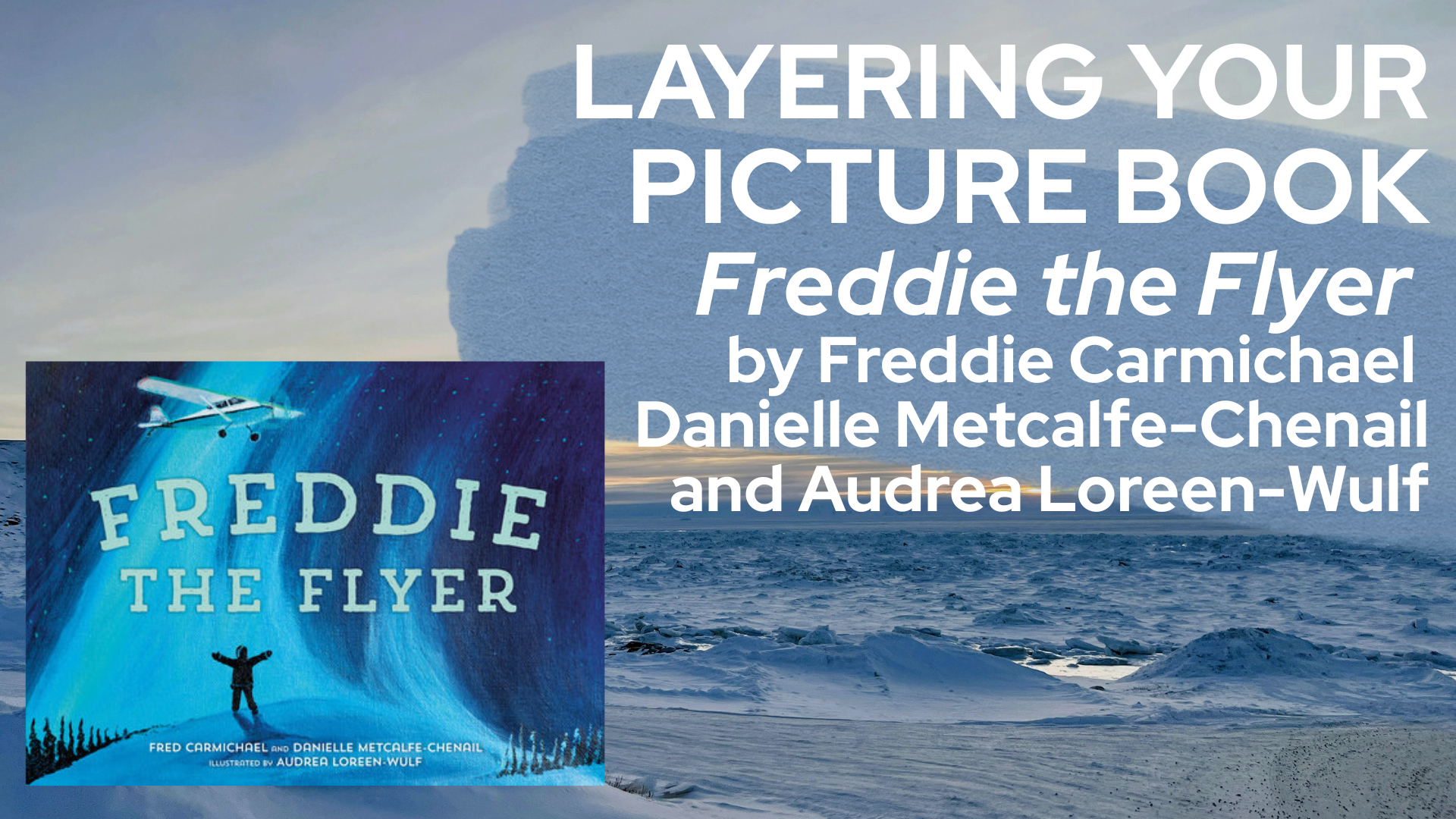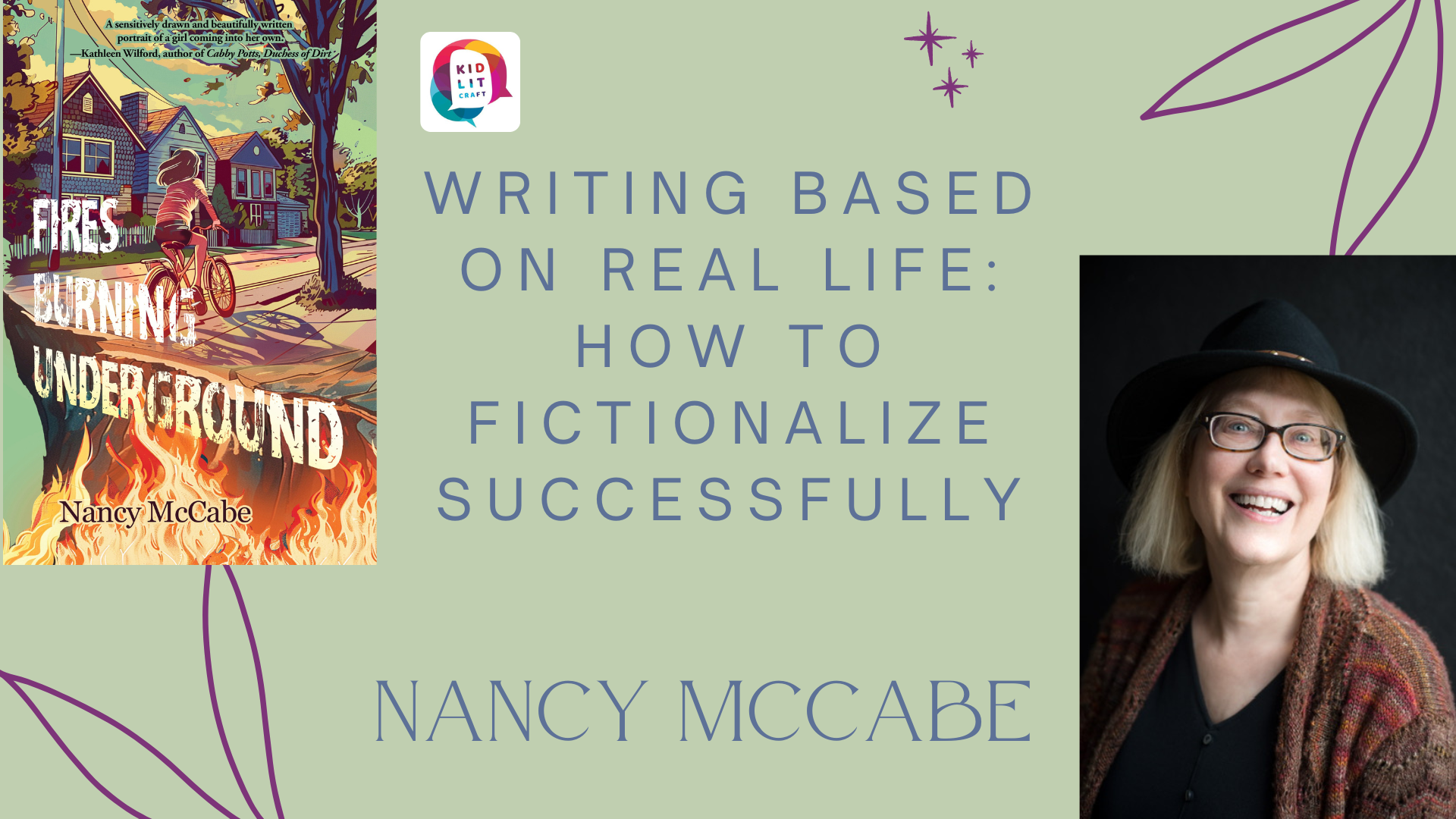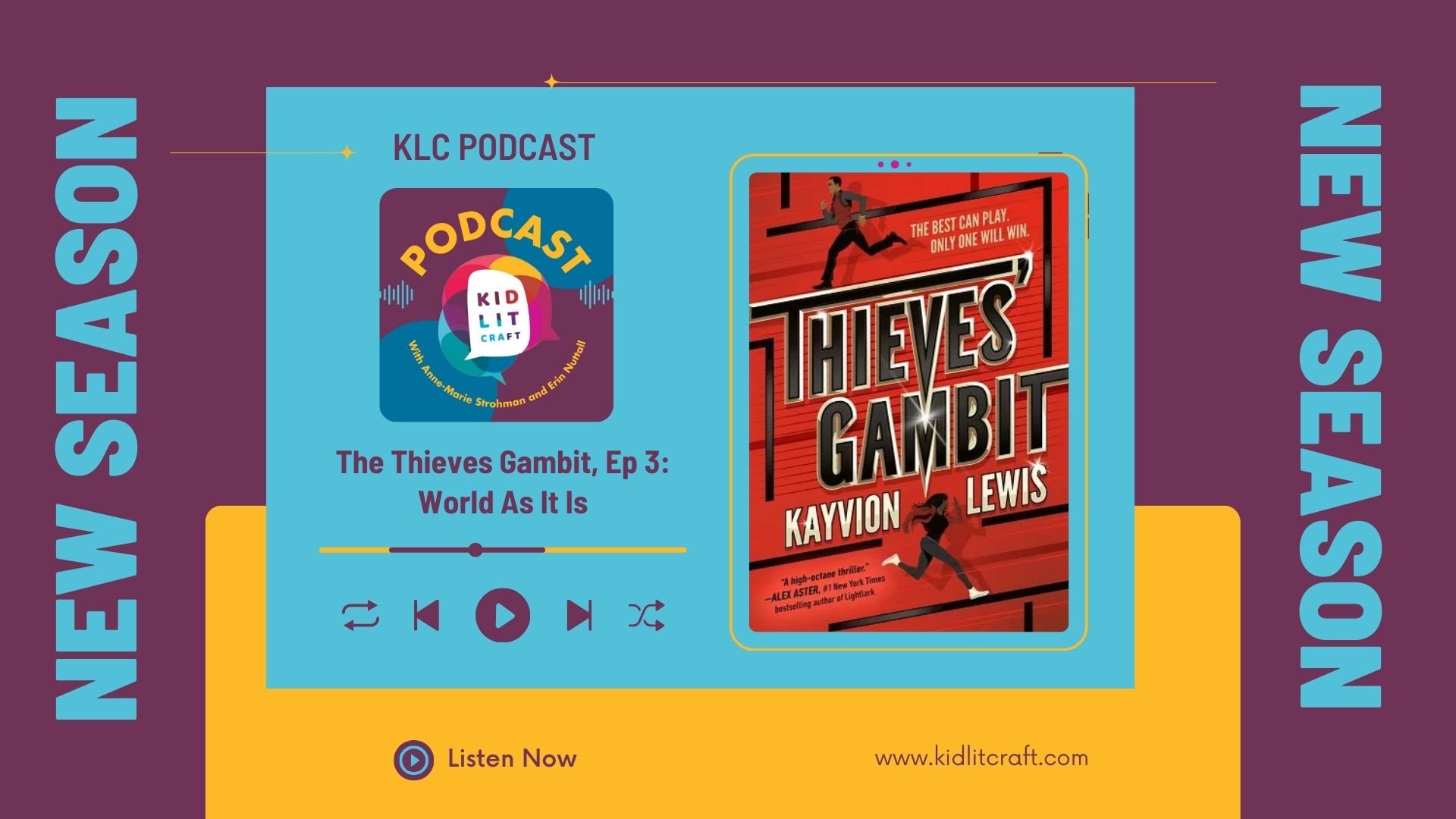Craft Articles
Join us in exploring others’ craft and building our own.
Here you will find explorations of mentor texts – articles that dive into specific craft elements in published books, interviews with authors, and tips on growing and improving as a writer.
Disclaimer: Some posts include bookshop.org affiliate links. Use the links to support KidLit Craft and local bookstores, at no additional cost to you.
Browse the Blog

Layering Your Picture Book: Freddie the Flyer by Freddie Carmichael and Danielle Metcalfe-Chenail
A great picture book has multiple layers that add depth to the story and make it a re-readable experience for children and caregivers alike.
The picture book biography Freddie The Flyer, by Fred Carmichael and Danielle Metcalfe-Chenail, illustrated by Audrea Lorren-Wulf, is a perfect example of how layers can work together to tell a compelling story.

Writing Based on Real Life: How to Fictionalize Successfully
Converting my story from a personal one to a piece of fiction was the best choice. Not only did it strengthen the story I wanted to tell, but it reminded me that sometimes fiction is the best way to discover the truths of our lives.

Rebecca Weber: Writing Conflict, Chapter by Chapter
“I pay a lot of attention to conflict or stakes for driving the plot. Obviously, every book has an overarching conflict, but each chapter should have its own smaller conflict, too. Creating tinier tense moments throughout the book keeps the reader turning the pages.”

Kate O'Shaughnessy: Patience with the Process
“I’m always trying to tell myself to do less and trust the reader more. Trust that the actions of your characters will speak for themselves. Have them do kind things and you won’t have to describe them as kind. The reader will understand it, because the reader is smart. And it’s always much more exciting to figure something out than to be told it.”

Writing Engaging Young Adult Mysteries That Tackle Emotional Health Issues
“Mysteries are natural places to explore issues of emotional health, because the behavior of people who harm others can generally be traced back to their own emotional problems and issues, and of course their actions have a huge impact on the protagonists of our stories.”

Misa Sugiura: Taking It One Scene at a Time
“It is very easy to feel like what you've accomplished isn't enough. The solution (it's not easy): Enjoy the ride you're on. Let go of the stuff that's out of your control (other author's experiences, marketing budgets, awards) and control what you can, like writing your next book.”

Jessie Janowitz: Give Your Narrator a Secret
“Understanding your main character’s backstory is essential to the first-person voice. We filter the world through our unique personal experiences, . . . we refer to places we’ve been, people we’ve met, food we’ve eaten, etc. If we don’t know our narrator’s history, we can’t begin to know the language they’d use to describe it.”

Thieves’ Gambit: Opening ‘In Medias Res’ (KLC Podcast, S2 Ep. 3)
In the third episode of the podcast, Nuttall and Strohman discuss the opening for Thieves’ Gambit, which manages to do double duty by not only showing readers “the world as it is,” but also by dropping readers straight “in medias res,” or in the middle of things.

The challenge of depicting positive friendships in middle grade books
Three of the top sources of depression and anxiety are loneliness, feelings of isolation and a lack of connection. I also learned that increased screen time combined with separation during the pandemic made it harder for kids to know how to interact with others in person. That cemented my decision to show how friendships can hold together even when interests change.

How to Write a Big Emotional Scene: Fault Lines by Nora Shalaway Carpenter
Nora Shalaway Carpenter’s YA novel Fault Lines is a study in contrasts. It’s the story of Viv, a high school senior who lives in rural West Virginia, and Dex, a boy in her grade who moves to town. Viv lives a middle class life; Dex is only recently out of extreme poverty. Viv is anti-fracking; Dex’s mom works on the pipeline. But Viv and Dex are drawn to each other. This dual point of view novel barrels straight toward a huge conflict between these two characters. Carpenter handles the moment of greatest conflict with deft hands. Let’s take a look at how she helps readers connect with the characters’ emotions without getting maudlin.

Crafting a Story of Contrasts: A Q&A with Nora Shalaway Carpenter, author of Fault Lines
I needed to write what felt right and natural to me, even though I was worried my agent and editor (and readers) might think it was weird. . . . I have always felt a deep, almost spiritual or magical connection with the natural world. That’s what was coming through in my writing.

It’s Not Just Letters Anymore: Modern Epistolary in Carrie Firestone’s The First Rule of Climate Club
In First Rule of Climate Club, Fisher Middle School’s new eighth graders get the opportunity to participate in a science class pilot program devoted to climate change. Firestone tells their story through protagonist Mary Kate’s eyes, but uses a slew of different types of communication that creates room for other points of view.

Inspiring Activism: Interview with Carrie Firestone, author of THE FIRST RULE OF CLIMATE CLUB
“My books are all an extension of the activism and community organizing in my life. My teaching was also a reflection of that. I take on political/social realities that I would like to see in the world.” –Carrie Firestone

Crafting the Short Story: “They Call Me Hurricane” by Rocky Callen in Ab(solutely) Normal
I want to give you a sense of some things to think about as you approach writing a short story. Let’s look at Rocky Callen’s story “They Call Me Hurricane” from Ab(solutely) Normal to see how she approaches the short story form.

Breaking the 4th wall in Escargot by Dashka Slater pictures by Sydney Hanson
Dashka Slater’s text in Escargot (illustrated by Sydney Hanson) uses a number of techniques to break the fourth wall, such as posing questions to the reader and asking them to do physical actions, like turning the page or giving Escargot a kiss. All of these elements engage the reader and delight them!

Finding Inspiration in Necessity: A Q&A with Dashka Slater, author of Escargot
"I started out writing for adults and so when I published my first children’s book, after 15 years of writing for adults, I couldn’t believe what a warm welcome I got. People were immediately supportive and eager to share information. The collegiality of kidlit authors is one of the things that I love the most about this field."

Retro Post #9: VOICE IS WHERE THE MAGIC HAPPENS: SAL AND GABI BREAK THE UNIVERSE BY CARLOS HERNANDEZ
Through a combination of humor, culture, warmth and language, Hernandez uses voice to make his characters unforgettable and his novel hard to put down.

Walking with Lennon: How to Find Inspiration and Shape a Story
Novels are amalgams. Your experiences. Your friends’ memories. Stuff you’ve read. Stuff you’ve heard about. Be open to it all. Mash up the different elements. The real secret of the secret sauce of novel-writing is that no one knows what goes into it.

Keeping Things Real: Writing Authentic Realistic Fiction for Middle Graders
But engaging middle school readers requires more than an interesting plot—the characters and their experiences must feel authentic to and reflective of the complicated world in which the readers live.


